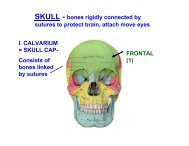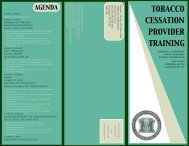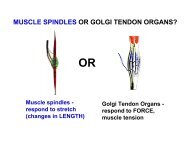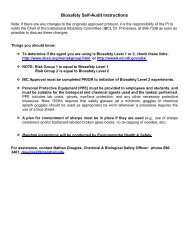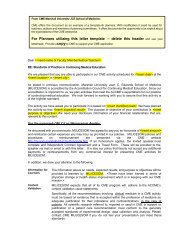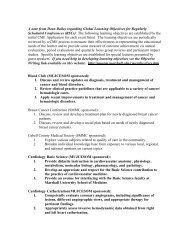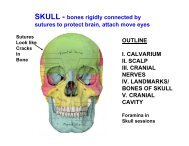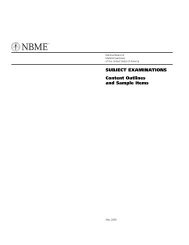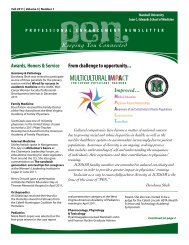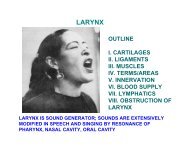FA 5 Progress Report WV-INBRE - Joan C. Edwards School of ...
FA 5 Progress Report WV-INBRE - Joan C. Edwards School of ...
FA 5 Progress Report WV-INBRE - Joan C. Edwards School of ...
- No tags were found...
Create successful ePaper yourself
Turn your PDF publications into a flip-book with our unique Google optimized e-Paper software.
Program Director/Principal Investigator (Last, First, Middle): Rankin, Gary O 66Family Affected/normal members115001 8 affected + 1 normal115021 3 affected + 1 normal115027 9 affected + 1 normal115028 4 affected + 2 normal116003 5 affected + 2 normal117005 4 affected + 1 normalTable 2. Numbers <strong>of</strong> individuals for whom exomes have been sequenced. *Some normals arerelatives and others are married in.To date, we have performed discrete filtering on family 115027. We focused our efforts on thisfamily because <strong>of</strong> the large numbers <strong>of</strong> affected members. Our filtering process considered totalSNPs and indels and contained the following stages:(1) Inclusion <strong>of</strong> all variants present in an exome but absent from the reference human genome(hg19)(2) Inclusion <strong>of</strong> all variants present in all affected members and exclusion <strong>of</strong> all variants present inone normal relative and one unrelated normal.(3) Exclusion <strong>of</strong> all variants with allele frequencies greater than 5% or 15%. (Given an autosomaldominant mode <strong>of</strong> inheritance, an affected genotype frequency <strong>of</strong> 5% (AA and Aa) and HardyWeinberg equilibrium, the mutant allele frequency would be ~2.5%.)In the filration process, we assumed that (1) the trait was transmitted as an autosomal dominantwith complete penetrance, (2) all affected members have carry the mutation, and (3) the hg19reference genome does not have the FCH mutation. After stage (1), we found an average <strong>of</strong>231,213 SNPs and 12,273 indels per family member. Retention <strong>of</strong> SNPs present in all affectedmembers and removal <strong>of</strong> SNPs present in the two normals reduced the number <strong>of</strong> SNPs to 624and indels to 47 (stage 2). When we eliminate SNPs whose allele frequency is less than 5% or15%, total SNPS are reduced to 29 or 70 SNPS, respectively (stage 3). (Indel allele frequencieshave been obtained at this time. Table 3 shows the number <strong>of</strong> shared variants after each stageVariants per stage Filter SNPS IndelsStage 1 Total (mean per subject) 231,213 12,273Stage 2 Filtered by affected-normal 624 47Stage 3 Filtered by MAF = 15% 70 NATable 3. Variants present after each filtration stage.In order to identify pathogenic SNPs, we categorized the variants as shown in Table 4. Many <strong>of</strong> thevariants were located in intronic regions or unknown (uncharacterized) loci. At the 15% minor allelefrequency cut<strong>of</strong>f, two missense variants mapped to uncharacterized open reading frames onchromosomes 1 and 17.Variant Type Minor Allele Frequency5% 15%synonymous coding SNPs 1 4intronic 8 30 (1 in ACLY in splice site)missense 0 2 (uncharacterized ORFs)Near 3’ end <strong>of</strong> gene 1 2Near 5’ end <strong>of</strong> gene 1 1Unknown (1 on Y chromosome)11 133’ untranslated region 2 13PHS 2590 (Rev. 06/09)Continuation Format Page



